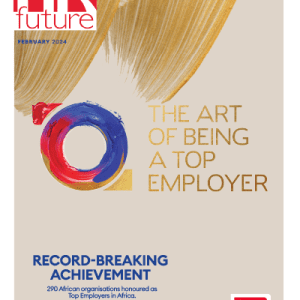Without good leadership, countries, communities and companies will achieve nothing of any consequence. They will slowly decay and inevitably fall prey to opportunistic predators who seek to grab power in order to use it for their own selfish purposes.
This causes untold hardship for those who are the most vulnerable.
With good leadership, they will grow and create opportunities for all to prosper. The strong will be inspired to build infrastructures and introduce innovations that will make everyone’s lives easier and more comfortable.
But the leadership that has brought us this far will not be able to take us much further. A vastly different kind of leader is required – one that has qualities previously not considered necessary or indeed desirable in a leader.
What, then, will this leader of tomorrow look like?
I have previously said that there are many definitions of leadership, and they all speak to one or more aspects of leadership. My understanding of leadership is that it is the application of certain qualities, skills and actions to take people to a better reality.
From a vision to a cause
We’re told that leaders should create an inspiring vision. Check. They should motivate and inspire people to embrace that vision. Check. They should manage the implementation of that vision. Check. They should motivate, guide and coach their team to achieve the vision. Check, check and check.
But the days of the vision and mission on the walls in the company’s offices are over. New leaders will need to be able to inspire people to embrace a CAUSE rather than a vision. Why? With a vision, you get people excited but, despite having a vision, without a cause, you get only reluctant effort. Yet people will die for a cause.
When people embrace a cause, their hearts and minds will engage with the cause and they will do anything they are required to do with purpose and intent. They will go above and beyond what is required, all for the cause. Millennials, in particular want to work for a company that has a purpose, a cause. They also want to do work that has meaning.
If you want to develop your next generation of leaders who will get the next generation of workers engaged, help them articulate your company’s cause and align their own cause with that.
From doing to being
Leadership programmes almost all teach aspirant leaders what to DO to achieve all of the above, but few teach leaders what they must BE to achieve great leadership. This has bred a generation of leaders, most of whom are highly efficient at what they DO but sadly lacking in what they ARE as human beings.
Former leaders have been modelled on a military style of leadership – understand and excel at strategy, outmanoeuvre the competition and conquer the market. This bred leaders who operated on the basis of a large power gap between themselves as leaders and their followers. They issued orders and expected them to be obeyed.
The leader of tomorrow will be a very different person from the military style leader of the last century. The old school military style leader was comfortable in leading from the front. Tomorrow’s leader will need to be comfortable leading from the middle or back. It may seem like a case of, “Follow me, I’m right behind you,” but it’s not.
It requires a lot more courage to lead from among people than from the front. Tomorrow’s leader will lead from the middle or back because there will be no power gap between them and their followers. They will not consider themselves to be the most important or the most knowledgeable person in the room or the team. That’s because they will be hired because of their skill in getting multidisciplinary teams to collaborate on matters which they do not know much about. Their power will lie not in their technical expertise as much in their ability to shift people to a better reality.
Are your next leaders ready? If they are, your company’s future will be bright. If not, get ready for some stormy seas …
Alan Hosking is the publisher of HR Future magazine, www.hrfuture.net, @HRFuturemag. He assists executives to develop new generation leadership skills, manage their age as an asset, and achieve self-mastery so that they can lead with greatness and agility in an increasingly disruptive world.























